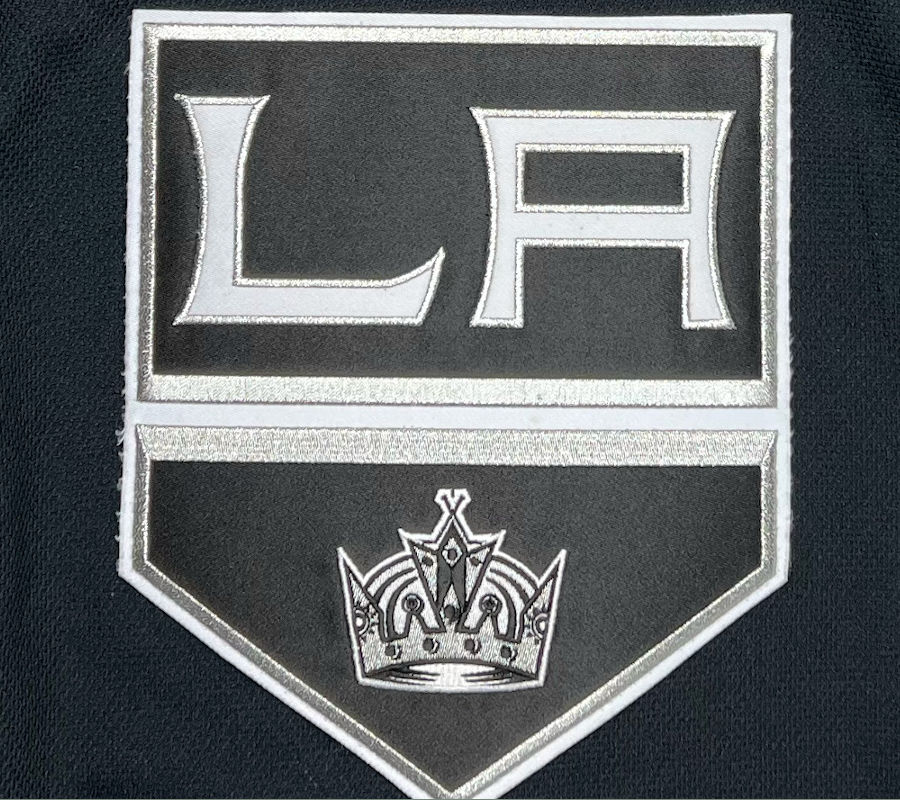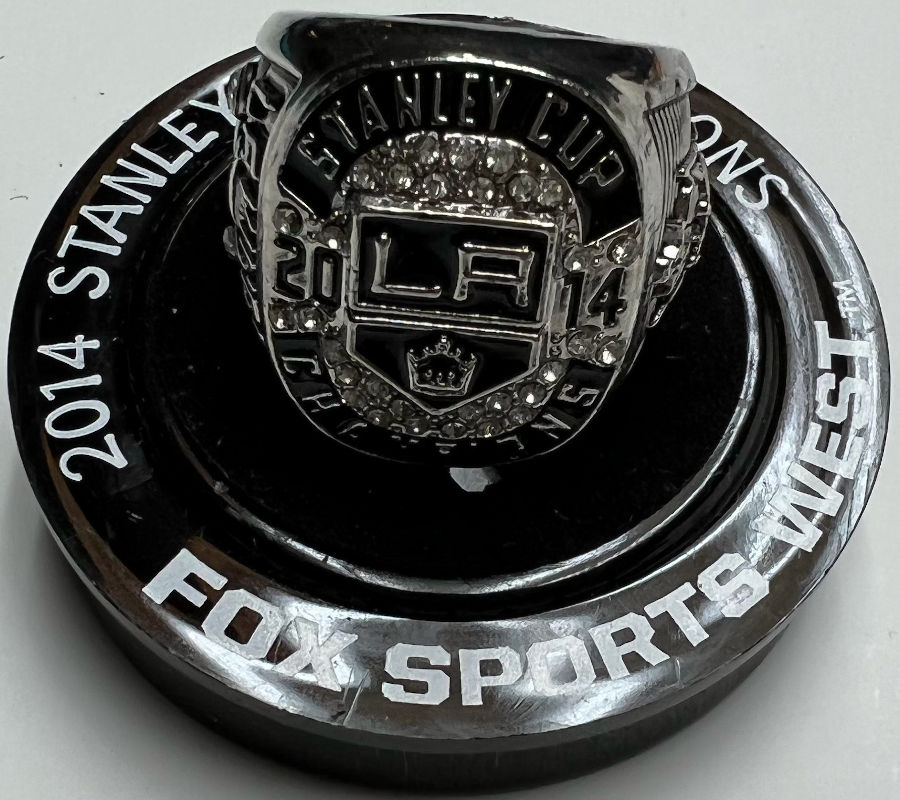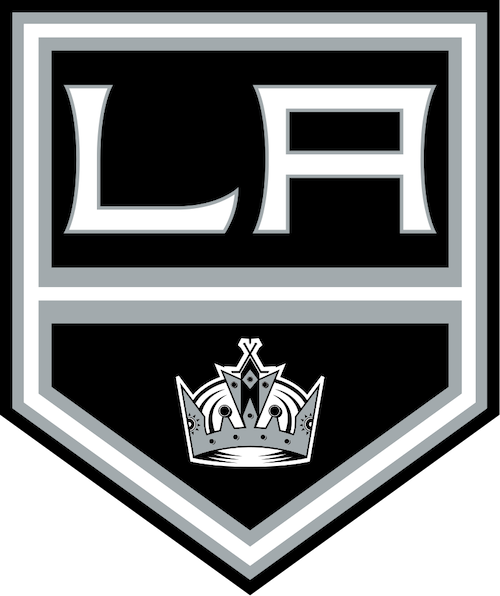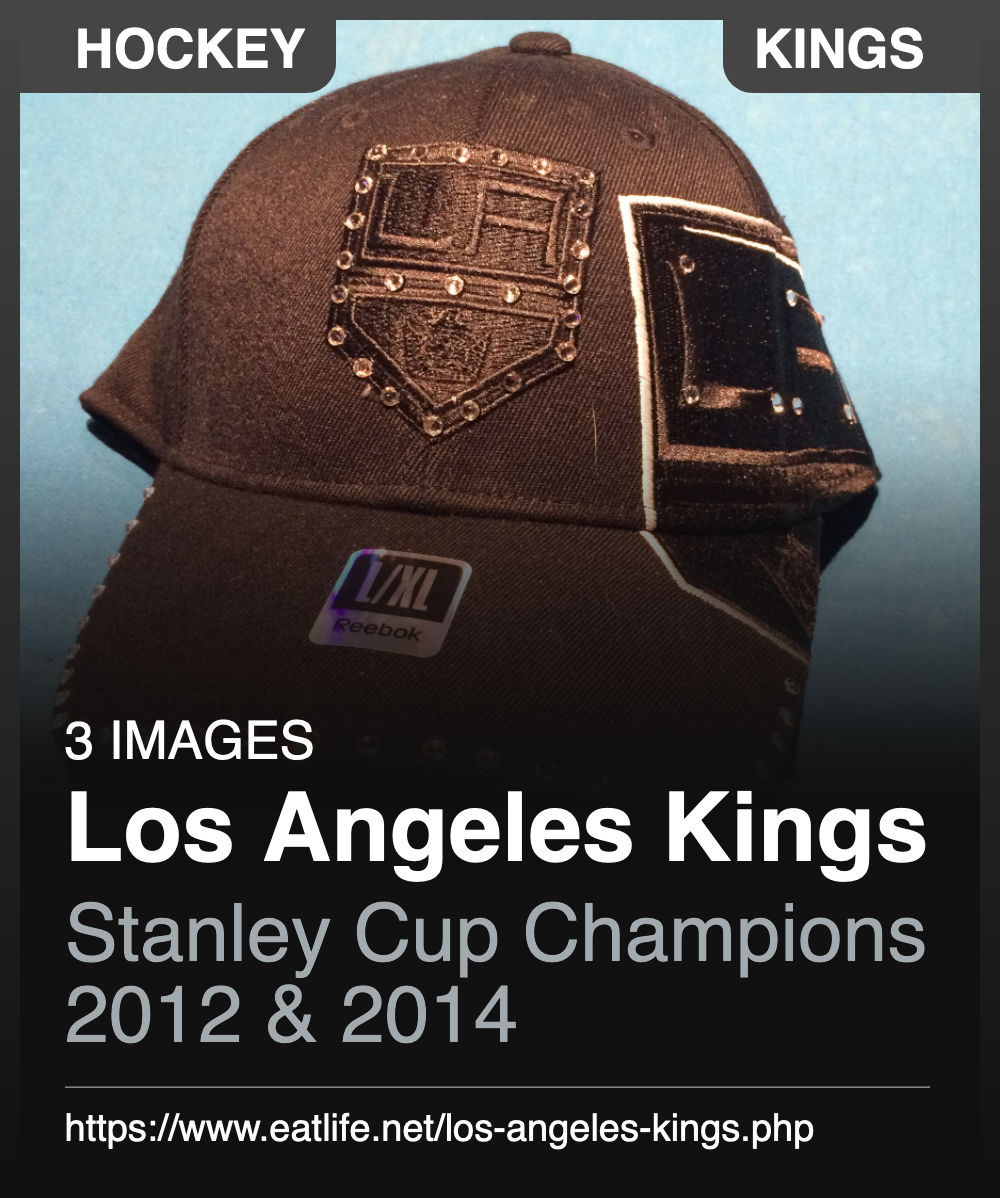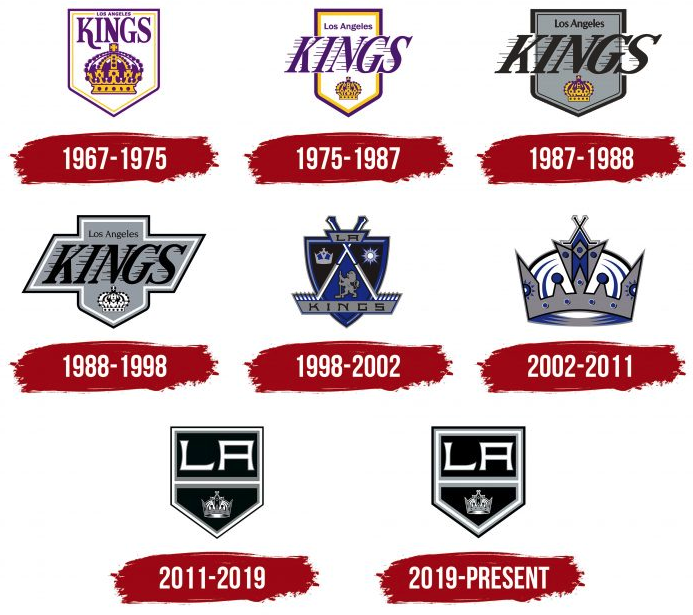
https://logos-world.net/los-angeles-kings-logo
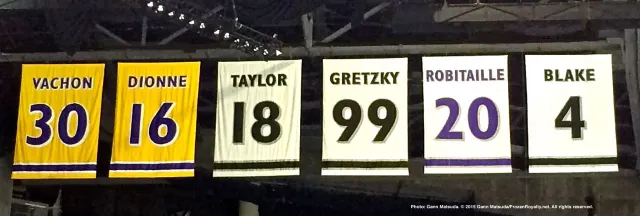
| Retired Numbers: | |
|---|---|
| 4 | Rob Blake |
| 16 | Marcel Dionne |
| 18 | Dave Taylor |
| 20 | Luc Robitaille |
| 30 | Rogie Vachon |
| 99 | Wayne Gretzky |
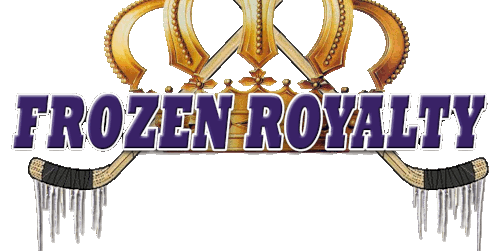 https://frozenroyalty.net/2015/01/18/rob-blakes-jersey-retirement/
https://frozenroyalty.net/2015/01/18/rob-blakes-jersey-retirement/
After much thought and consideration, it would be determined in early 1966 which cities would be awarded a new NHL team. Housed in a division of their own – the West Division – these “Second Six” teams would be the Minnesota North Stars, Oakland Seals, St. Louis Blues, Philadelphia Flyers, Pittsburgh Penguins, and the Los Angeles Kings. For the first time in league history, 12 teams would be competing for the Stanley Cup beginning with the 1967-68 season.History of the Kings:
In March of 1965, NHL President Clarence Campbell began a formal process to expand the National Hockey League from six teams to an even dozen. The maneuver would see franchises placed in both the midwest and the west coast, in addition to the league’s already established “Original Six”.
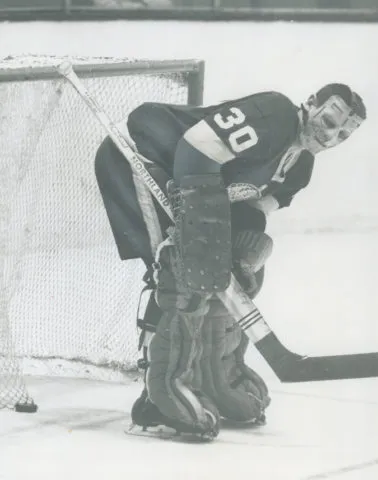
Hockey Comes to Paradise:
This expansion would also mark the first time that NHL hockey would be featured in the state of California. Since their inception in 1967-68, the Kings have appeared in three Stanley Cup Finals, winning the championship in two of those appearances. It would take 44 seasons for Los Angeles to win their first Cup, and the team has now been in existence for over half a century.Jack Kent Cooke:
It was original owner Jack Kent Cooke who brought ice hockey to the beautiful beaches of southern California. Having already owned the Los Angeles Lakers of the National Basketball Association, Cooke’s new ownership of the Kings certainly made sense. He was a Canadian from Hamilton, Ontario, and while his earliest sports ownership was with the Lakers and the NFL’s Washington Redskins, Cooke’s truest passion was for hockey.Air of Royalty:
Cooke named the team the “Kings” because he wanted to bring forth an air of royalty. On October 14, 1967, the Kings played and won their first game at the Long Beach Arena against the Philadelphia Flyers, 4-2. Cooke had quite a reputation in Hollywood, as he fully intended to glamorize and brand his new team.Terry Sawchuk:
The most renowned original King was none other than 38-year-old legendary goaltender Terry Sawchuk. Many still consider Sawchuk the greatest goalie ever to play the game. By the time he was claimed by the Kings from Toronto in the 1967 Expansion Draft, Sawchuk had already won four Stanley Cups and had earned 100 shutouts in his career. He would earn a record of 11-14-6 with the first-year Kings, and added another two shutouts to his incredible career total.Aside from Sawchuk however, those early Kings teams did not really have much in the way of “big names”. Cooke, who had a penchant for nicknames and a desire to glitz-up his new hockey club, peddled the more colorful names of his players to further ingratiate them among “Tinseltown”.
The Fabulous Forum:
In the earliest seasons of the franchise came the likes of Eddie “The Jet” Joyal, Eddie “The Entertainer” Shack, “Cowboy” Bill Flett, Juha “Whitey” Widing and Real “Frenchy” Lemieux to name a few. Finally, Cooke would change the course of Kings’ history by building the Forum, or better known to Hollywood locals as “The Fabulous Forum,” where the team would play for the next 32 seasons.Bob Pulford:
The 1970s began with the Kings acquiring future Hall of Famer Bob Pulford from the Toronto Maple Leafs, in exchange for Garry Monahan and Brian Murphy on Sept. 3, 1970. A seasoned veteran, Pulford not only brought proven leadership to the Kings’ locker room, but also infused a sense of legitimacy and respect to the team’s lineup.Pulford, a left-winger, had won four Stanley Cups as a member of the Leafs prior to the trade. He would finish his NHL playing career with the Kings, with his final two campaigns in 1970-71 and 1971-72.
Retiring as a player, Pulford became head coach for Los Angeles in 1972-73, and would proceed to lead them to four straight playoff appearances after his first season as coach.
With Pulford at the helm, the Kings posted a team-best 42-17-21 record in 1974-75. Much of that success can be attributed to the incredible goaltending of Hall of Famer Rogatien Vachon, as well as the intense checking of players such as Butch Goring, Mike Murphy and Bob Nevin.
Marcel Dionne:
On Jun. 23, 1975 the Kings made what would be one of their most significant trades in franchise history. Sending Terry Harper, Dan Maloney and a 1976 second-round draft pick to the Detroit Red Wings, Los Angeles would receive superstar Marcel Dionne and defender Bart Crashley.While Crashley would play all of four games in a Kings’ uniform, the Hall of Famer Dionne would play just short of 12 seasons for the franchise. He would become the first King to score 50 goals in an NHL season – something he would accomplish six times for them. Of the 731 goals that Dionne scored in his NHL career, 550 of them were scored while with Los Angeles.
As the decade came to a close, Cooke would sell the Kings, Lakers, and “The Fabulous Forum” to Dr. Jerry Buss in 1979.
1980s:
The beginning of the 1980s would feature a trio in Los Angeles that is still considered one of the premier forward lines in hockey history. Dionne would be joined by right-winger Dave Taylor and left-winger Charlie Simmer to form “The Triple Crown” line. In the 1979-80 season alone, they combined for 328 points as a unit. The very next season they became the first line combination where each member surpassed 100 points in a single season (Dionne – 58-77-135, Taylor – 47-65-112, Simmer – 56-49-105).As the decade went along, the Kings brought in a host of young talent that became the makeup of the team. Players such as Bernie Nicholls, Larry Murphy, Jim Fox, Mark Hardy, Jay Wells, Steve Bozek, Doug Smith, Brian MacLellan, Grant Ledyard and Garry Galley were among the fan favorites for the better part of the decade.
Miracle on ManchesterMany of those same players were part of the incredible come-from-behind overtime playoff thriller against the Edmonton Oilers in 1982, in what became called “The Miracle on Manchester”.Reaching the middle part of the decade, three talented Kings youngsters came aboard. Luc Robitaille, Jimmy Carson, and Steve Duchesne represented L.A. on the NHL’s All-Rookie Team for 1986-87.
The Great One:
The biggest moment of the 1980s, however, was Los Angeles’ acquisition of “The Great One”, Wayne Gretzky in August of 1988. With Bruce McNall having obtained majority ownership of the team in 1987, he stunned the hockey world on Aug. 9, 1988 when he traded Carson, Martin Gelinas, and first-round draft picks in 1989, 1991 and 1993, and cash to the Edmonton Oilers in exchange for Gretzky, Mike Krushelnyski and Marty McSorley.1990s:
This decade brought the Kings their first-ever Stanley Cup Final appearance. For the 1992-93 season, rookie head coach Barry Melrose guided an underdog team (39-35-10 for 88 points in the Smythe Division) into a showdown against the Montreal Canadiens. Despite a tremendous performance by Gretzky (15-25-40 in 24 games), the Kings would lose in five games to the Canadiens, as Montreal won their 24th Stanley Cup.The remainder of the decade would be disappointing for L.A. The Kings failed to make the playoffs in 1993-94, 1994-95, 1995-96, 1996-97 and 1998-99. Subsequently, the team changed owners out of bankruptcy, placing the title in the hands of Philip F. Anschutz and Edward P. Roski, Jr. They would enter into a rebuilding phase, with their first move being the appointing of legendary Kings player Dave Taylor to the position of General Manager.
The STAPLES Center arena was officially opened on Oct. 17, 1999, and became the new home for the Kings.
https://thehockeywriters.com/history-of-the-los-angeles-kings/
| Ranking the Coaches: | |
|---|---|
| https://www.ranker.com/list/best-los-angeles-kings-coaches/ranker-hockey | |
| 1 | Darryl Sutter |
| 2 | Barry Melrose |
| 3 | Bob Pulford |
| 4 | Roger Neilson |
| 5 | Pat Quinn |
| 6 | Terry Murray |
| 7 | Andy Murray |
| 8 | Larry Robinson |
| 9 | Don Perry |
| 10 | Larry Regan |
| 11 | Tom Webster |
| 12 | Red Kelly |
| 13 | Bob Berry |
| 14 | Johnny Wilson |
| 15 | Hal Laycoe |
| 16 | Robbie Ftorek |
| 17 | Parker MacDonald |
| 18 | John Torchetti |
| 19 | John Stevens |
| 20 | Ron Stewart |
| 21 | Mike Murphy |
| 22 | Marc Crawford |
| 23 | Fred Glover |
| 24 | Rogatien Vachon |
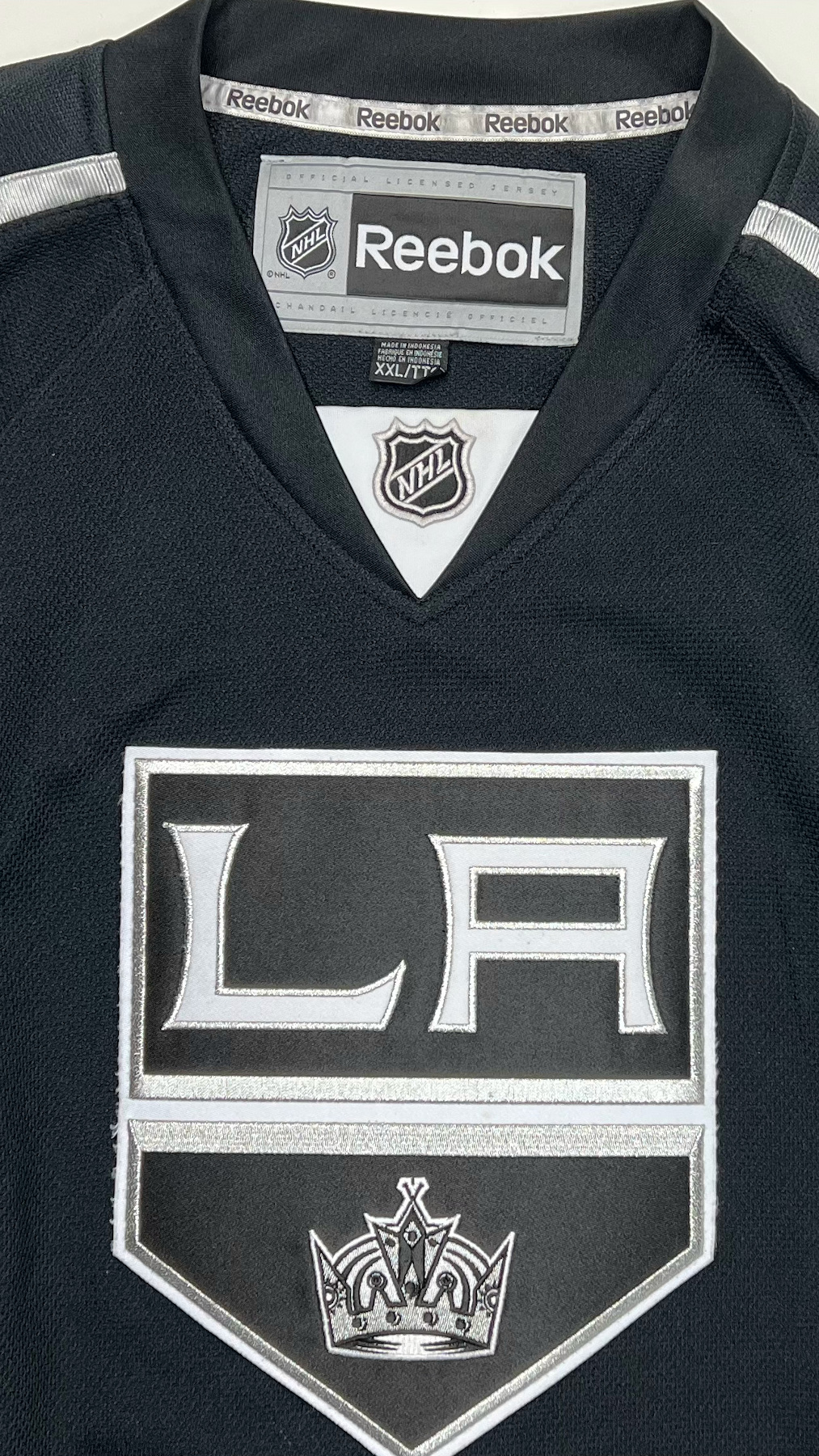

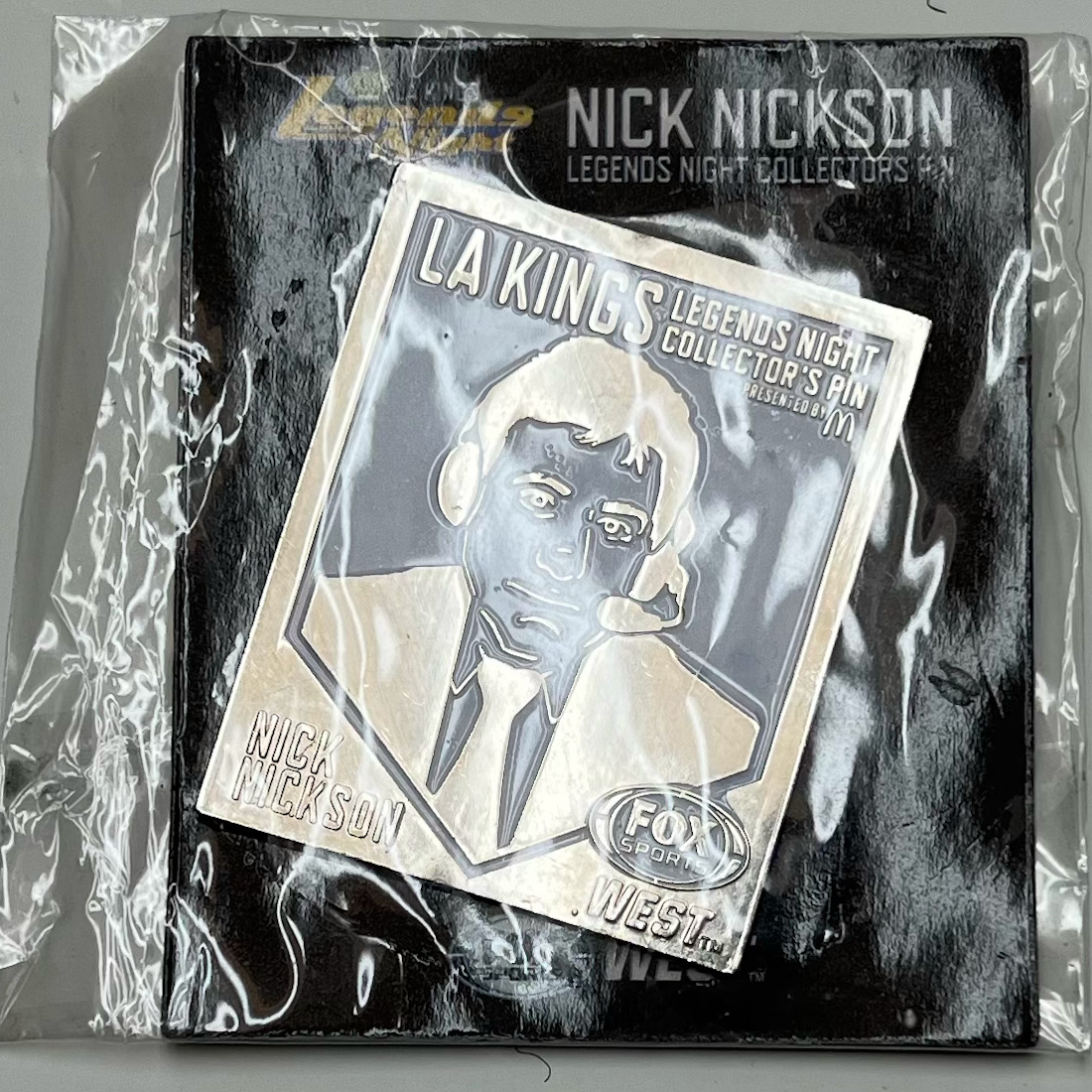
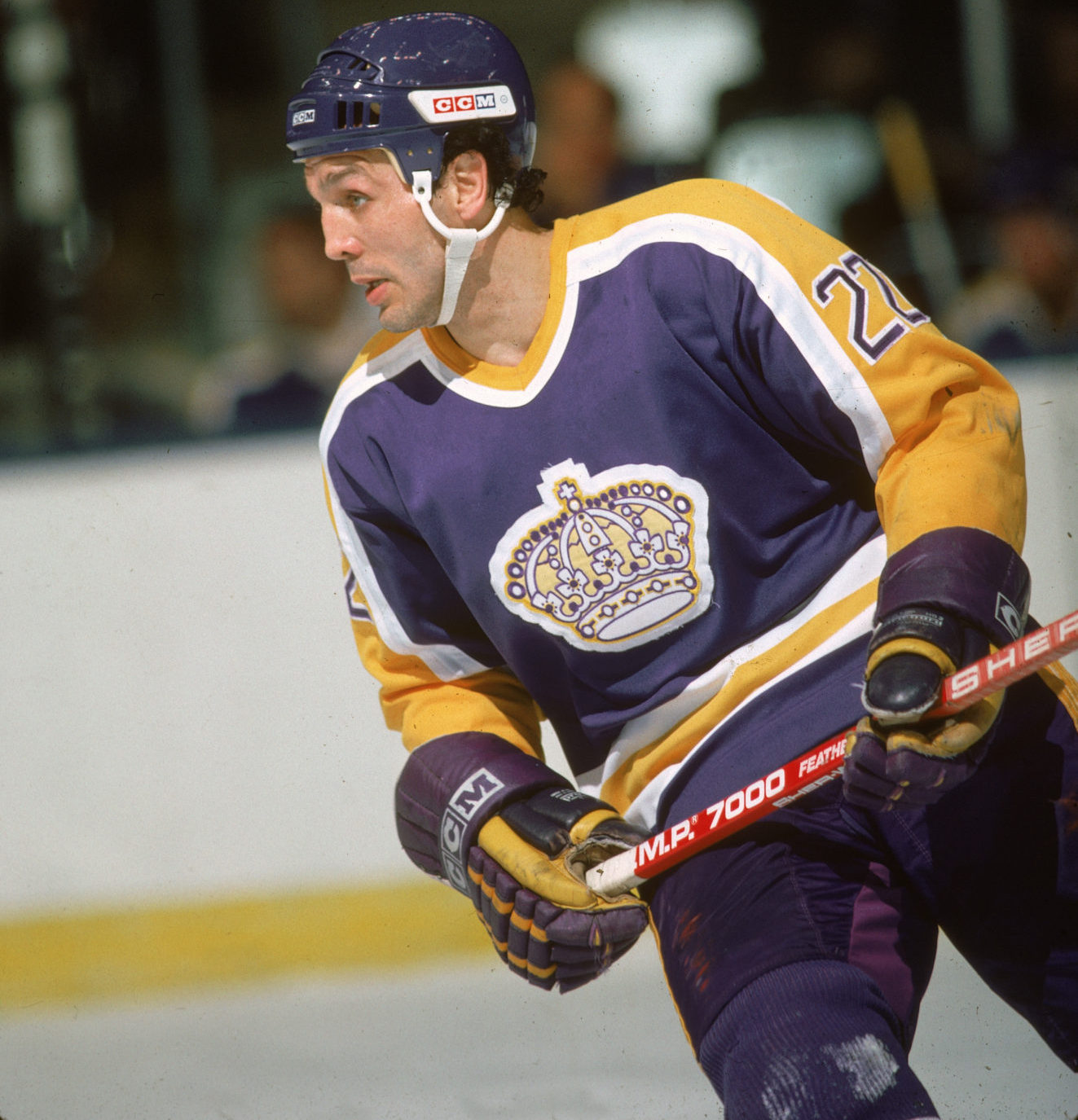
The NHL’s career leader in penalty minutes with 3,971, Dave “Tiger” Williams arrived in Los Angeles after a trade from Detroit during the 1984-85 season. Over parts of four seasons and 162 regular season games with the Kings, Williams scored 40 goals and added 50 assists. He’s also credited for coining Robitaille’s nickname “Lucky,” partly because of the presence of Morris Lukowich – another “Luke” in the dressing room – and because he scored on his first shift in the league and lived in Marcel Dionne’s nice house, allowing him to drive to games in a car most 20-year-olds can’t afford. One of the most famous and feared enforcers of any era, Williams is one of only 15 players to score 200 goals and amass more than 2,000 penalty minutes.
 https://lakingsinsider.com/2017/10/11/legends-nights-honor-tiger-williams-felix-potvin-mark-hardy/
https://lakingsinsider.com/2017/10/11/legends-nights-honor-tiger-williams-felix-potvin-mark-hardy/





